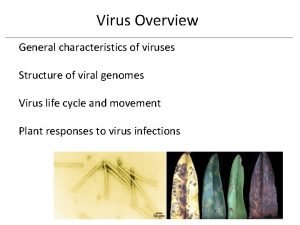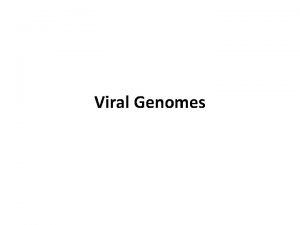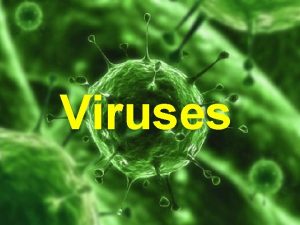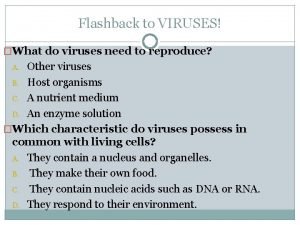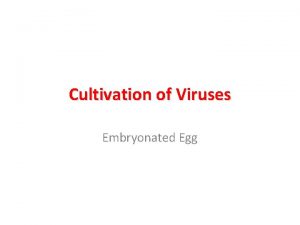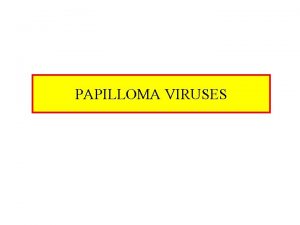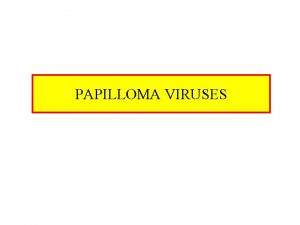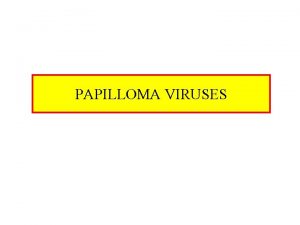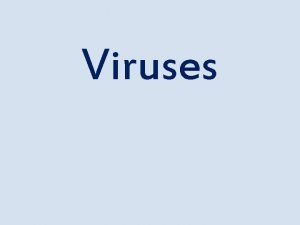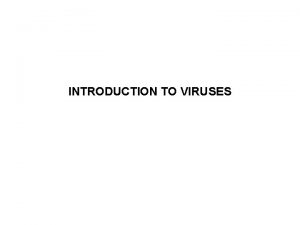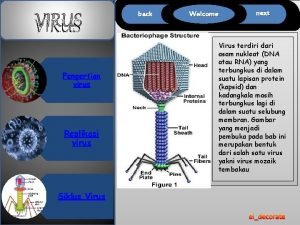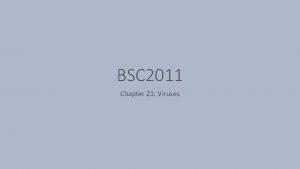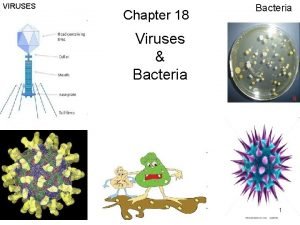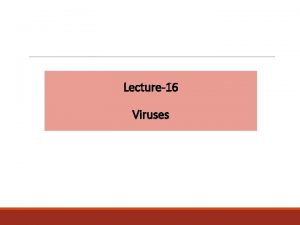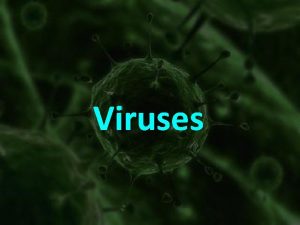Virus Characteristics 22819 Virus Characteristics n Viruses are












- Slides: 12

Virus Characteristics 2/28/19

Virus Characteristics n Viruses are considered nonliving particles because they cannot replicate on their own (THEY ARE NOT ALIVE) n n Viruses are very small particles n n They need a host cell – a cell that a virus uses to replicate ½ to 1/100 the size of a bacterial cell Viruses do not perform cellular respiration, they do not grow, or develop n They infect bacteria cells, and the bacteria cells performs these functions for the virus

Virus size vs. Bacteria size Virus Bacterium Animal cell nucleus 0. 25 m

Virus Structure n 2 main parts n n Inner core made of nucleic acid (DNA or RNA) n This holds the instructions for making copies of the virus Capsid - outer coat of protein n The capsid determines the shape of the virus § § Polyhedral Helical envelope with projections classic phage shape

Virus Structures Capsomere of capsid RNA 18 250 mm Capsomere DNA Membranous envelope Head Capsid Tail sheath RNA Tail fiber Glycoprotein 70– 90 nm (diameter) 80– 200 nm (diameter) 20 nm (a) Tobacco mosaic virus 50 nm (b) Adenoviruses 50 nm (c) Influenza viruses DNA 80 225 nm 50 nm (d) Bacteriophage T 4

A leaf infected by a tobacco mosaic virus

Bacteriophage

Adenovirus

Influenza virus

Viral Diseases n n n Viruses are pathogenic and therefore disease causing. Some viral diseases: n HIV n Influenza n Colds n Polio n Rabies n Smallpox n Hepatitis Vaccines PREVENT viruses

Virus Specificity n Viruses are very specific as to which host cell that can infect n n For example : HIV can only infect that Helper T Cells of humans Their chemical recognizers (shape) coincides with the host cells receptors (shape)

Controlling Viruses n The bodies immune response to viruses is when white blood cells kill and remove viruses from the body. n Vaccines take advantage of this immune response n n n They are made of weakened or killed viruses which cause your body to have an immune response, but not make you sick This builds up your immunity to a virus Once your body fights off a virus, your Helper T Cells remember that virus and it can never make you sick again n n This is why you have to get a flu shot every year The virus mutates and your Helper T cells don’t recognize it
 Lytic cycle animation
Lytic cycle animation Watch?v=dhlvcdeg0yg
Watch?v=dhlvcdeg0yg Insidan region jh
Insidan region jh Which of the following is plant virus
Which of the following is plant virus General characteristics of viruses
General characteristics of viruses Why are viruses considered nonliving?
Why are viruses considered nonliving? Viruses
Viruses Lysogenic viruses do not
Lysogenic viruses do not Section 19-3 diseases caused by bacteria and viruses
Section 19-3 diseases caused by bacteria and viruses Cultivation of viruses
Cultivation of viruses Cultivation of viruses
Cultivation of viruses Egrette - chapter 21
Egrette - chapter 21 Chapter 20 viruses and prokaryotes
Chapter 20 viruses and prokaryotes



